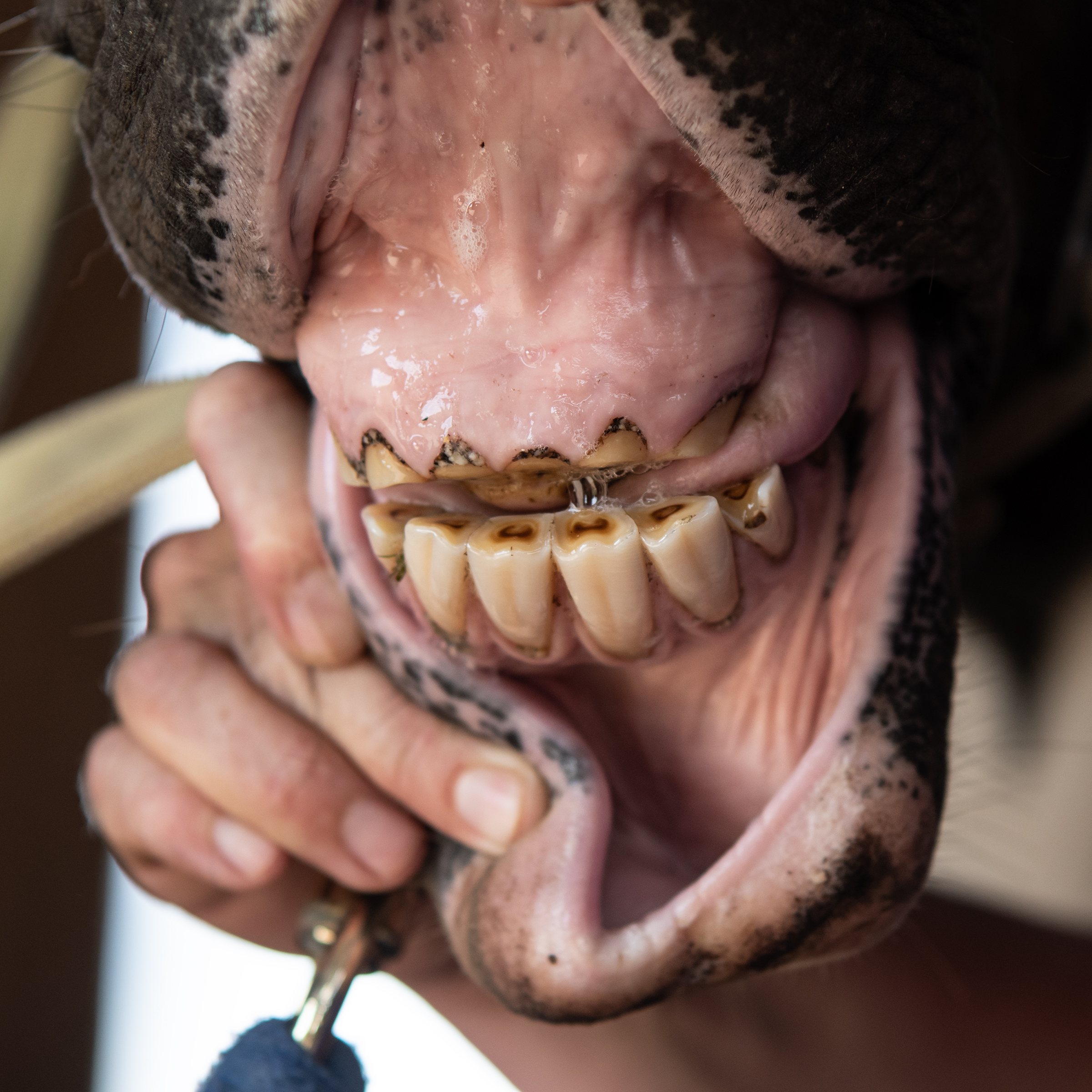
Horses need long-stemmed fiber for optimal health, according to Rhonda Hoffman, PhD, a professor and director of horse science at Middle Tennessee State University. Chewing on hay supports uniform dental wear and encourages saliva production, which is key to gut health.
“Eating forage offers a buffering benefit that lowers ulcer risk,” she explained. “Hay forms a fiber ‘mat’ in the stomach that reduces the acid splash mechanism and protects against ulcers.”
Hay also has a scratch factor, according to Hoffman. As it moves through the gastrointestinal tract, it improves gut secretions and removes dead cells. Long-stemmed fiber slows the rate of passage through the digestive tract, allowing time for proper digestion, fermentation and absorption of nutrients. For all of these reasons, Hoffman prefers hay to hay alternatives. Senior horses or hay shortages are the two situations where she said they are appropriate.
“Long-stem fiber is so important for horses that I always recommend hay alternatives in order from longest- to shortest-fiber length,” she said.
Here are her recommendations listed in order of most to least preferred.
Chopped/Bagged Hay: “This is the best alternative and is generally the same as regular hay except that it’s chopped and bagged,” she said. “Often these products are higher in quality than local hays.”
Hay Cubes. Before feeding, soak cubes in water 10-15 minutes to soften. She advised against soaking longer as important nutrients might leach out.
Beet Pulp. This byproduct of processing sugar beets can be fed dry or soaked, shredded or pelleted. Beet pulp contains highly digestible fibers and 9-10% crude protein. However, it lacks the vitamins provided in hay, and it is very high in calcium and low in phosphorus, according to Hoffman.
“Soaked beet pulp is a great way to increase water intake,” she said.
Pelleted Hay. This forage, most often alfalfa, has been dried, ground and cooked into a pellet. Hay pellets have the nutrient and fiber profile of hay, so they can be fed in large amounts, but horses eat them more quickly than long-stemmed hay.
Complete Feeds. These formulated feeds are designed as a hay substitute. They must contain at least 18% fiber, but most range from 18-25% fiber, Hoffman explained. Complete feeds contain the total calories, protein, fat, fiber, minerals and vitamins when fed according to the label instructions.
“Keep in mind that these must be fed in large amounts to meet the nutritional needs of the horse,” she said.


